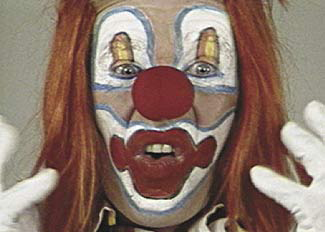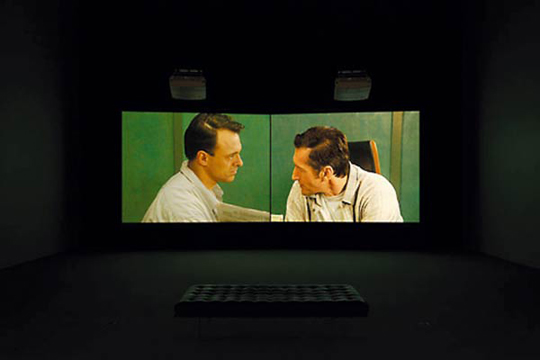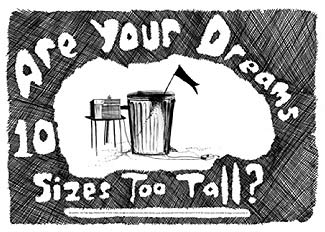
November 9 - December 21, 2006
Curated by Séamus Kealy




Opening reception: Wednesday, November 8, 6 - 10 pm
A free bus leaves the Hart House (U of T Downtown) at 3:00 pm for the lecture
A free bus leaves the Gladstone Hotel (1214 Queen St. W, Toronto) at 6:00 pm for the opening.
Lecture followed by opening reception: Wednesday November 8th, 4:00 pm
Artist Talk with Gary Hill
Kaneff Centre 137, University of Toronto at Mississauga. Wednesday November 8th 4:00 - 5:00 pm.
Participating artist Gary Hill discusses his work with curator Seamus Kealy.
18:Beckett is an interdisciplinary exhibition project marking the 100th anniversary of the birth of Nobel Prize-winning Irish writer Samuel Beckett. The title refers to the eighteen years marked since Beckett's death and the eighteen sites where this project will take place in Mississauga and Toronto. These sites and events are an artist's lecture, eight artist projects, six weekly film/video art events, a film screening evening, a symposium and performance, and a publication; all of which arise out of Beckett's legacy.
Inventing Obscurities:
Samuel Beckett & Contemporary Art
The question has been posed regarding Samuel Beckett and contemporary art, about their proper and improper relations, about how they get along, about how they keep company or part ways. Under the coordination of Séamus Kealy and the Blackwood Gallery and in celebration of Samuel Beckett’s centennial year, a number of visual artists working in new media and inspired by the texts and plays of the twentieth century Irish bard are haunting the spaces of the University of Toronto at Mississauga and filling them up with questions.
Searching for some dark illumination concerning the aesthetic posture that directs Samuel Beckett’s oeuvre, I turn to The Unnamable for some questionable and questioning advice that both demands and resists analysis at the limits of self-knowledge:
And all these questions I ask myself. It is not in a spirit of curiosity. I cannot be silent. About myself I need know nothing. Here all is clear. No, all is not clear. But the discourse must go on. So one invents obscurities. Rhetoric.
What does it mean
to invent obscurities? I take this as a Beckettian approach to art and
its making. To make contemporary art means for Beckett to invent obscurities.
It is as simple and as complicated as that. This mode of invention has
nothing to do with the satisfaction of curiosity that is somehow tied
to the production of knowledge and to the discourse of enlighten-ment.
In contrast, the discourse (like the show) that must go on is not at
all clear. Whatever the technical means deployed (video, performance
art, installation), what is produced is bound to be obscure. At odds
with the bright lights of the enlightenment, the Beckettian discourse
is the subject of an intermittent or an irregular light. The Unnamable
rhetorically asks us to consider what is so strange and so wrong about
these lights: “Is it their irregularity, their instability, their
shining strong one minute and weak the next?” But there is a further
question: Is this Beckettian mode of invention to be viewed as obscurantism,
a rendering unto obscurity solely for obscurity’s sake? This is
one of the questions that you must engage with when you approach the
contemporary work of art under the influence of Samuel Beckett.
You also should not forget that rhetoric (standing alone by itself)
substitutes for obscurities in the above citation. From the sophistries
of the pre Socratic philosophers to the tragicomic characters of Samuel
Beckett, the rhetorical arts (verbal and/or visual) are to be read as
arts of obscurity that conceal/ reveal the truth under the cover of
performance and theatricality.
Beckett once said
that his favourite word was the one with the capacity to cast a reasonable
or unreasonable doubt over each and every situation. This word has an
uncanny and paradoxical power to push being over the edge of certainty
and into the state of limbo where things become undecided. In this way
(and in between), the unnamable Beckett text is transported into the
undecidable. The word in French is peut-être. The word in English
is maybe.
Perhaps.
- Louis Kaplan, Director, Institute of Communication and Culture,
University of Toronto at Mississauga